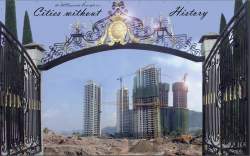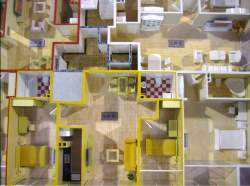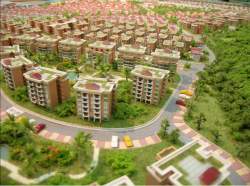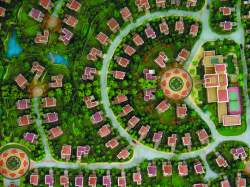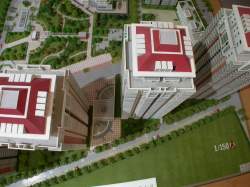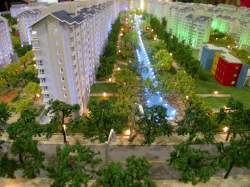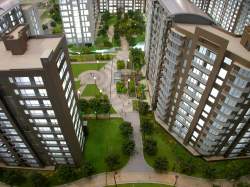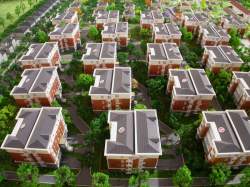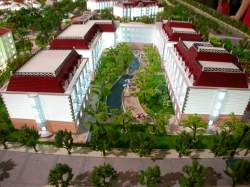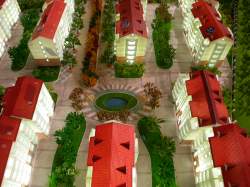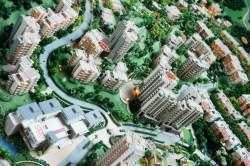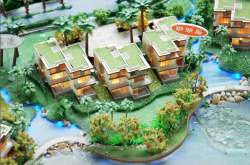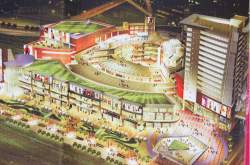Cities Without History
By: Neville Mars
Summary
China’s modern history is extremely young. The republic is young, the reform era even younger, entire cities build as new. This may explain the hunger for history, applied as instantly old-looking architecture. We ponder over the roots of the Eurostyle introduced by Chinese architects and Westerners alike. But copy and paste practices are slowly fading out, western designers officially avoided. This assumes Chinese design has accumulated enough quality and is ready to be implemented. But without cultural references what defines Chinese design? Does it imply a return to the philosophy of ancient times or is there room for a modern Chinese identity?
中国已经无数次证明,它已然掌握了建城市的速成法——拥有百万人口的都市也能在一片荒原上拔地而起。城里的一切都是簇新鲜的,空气里弥漫着对速度的热情,没有历史的城市也同样繁荣,人民安居乐业。然而就在中国进入文化的国际化舞台之时,中国能以抄袭西方建筑作品一样的效率而建立中国身份么。
中国的现代史极其年轻。这个共和国是年轻的,改革的时间更是短,所有的城市都是新建的。这也许解释了古老建筑所代表的历史的渴望。我们考虑中外建筑师所引进的欧式风格的起源。 但是拿来主义正在逐渐衰落,西方设计师也对其正式避免。这就预示着中国的设计已经积累了足够高的质量并且准备好了被实行。但是没有文化作参考,如何来给中国设计下定义呢? 它暗示着古代哲学的回归还是现代中国文化还有自己的特性?
City Without History
Formerly a nation of farmers, China is now halfway to becoming the empire of urbanites. Dust roads are asphalted over, carts turn into cars, and concrete apartment blocks are swiftly replaced by pink and lavender condominiums. Within the last decade the tidal wave of modernization has rushed far beyond China’s coastal boomtowns and out across the nation’s grey-green landscape. Many thousands of villages have doubled in size, and plans for a series of entirely new cities have been prepared, and are awaiting execution.
The shapeless low-rise expansions dominating Chinese urbanization are punctuated by a myriad of up-market housing projects — densely organised neighbourhoods of repetitive blocks fringed with small trees and parking lots. They are a cross between Celebration (a suburban enclave developed by the Disney Corporation for the faint at heart, where unhappiness has been officially banned) and The Projects (a concept for inner-city vertical slums for non-Caucasian Americans where happiness is hard to find). They offer the suburban comforts of cheap and tranquil living in Hong Kong-style tower block neighbourhoods. And they all look the same.
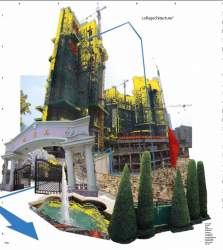
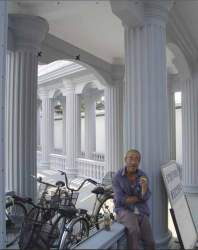
Given the pace of China’s development, the copy and paste strategy makes perfect sense: copying the urban layout, the engineering, the floor plans or simply the entire city is a tested approach. When the main structure has been erected it is a matter of applying the right style. In the Chinese housing industry this is a delicate operation. The style of the building, the outer skin, fulfils a number a practical purposes — it can soothe planning commissions, obscure the colossal scale of the project, and accurately convey the price bracket to the appropriate market niche.
Having seen dozens of cities across this great nation, I have come to the conclusion that in China aesthetics are irrelevant. Style, and even architecture — that collection of styles which aims to give identity to undifferentiated building mass — has been liberated of aesthetic relevance. The blanket of greyish pink that makes up the Chinese city will smother most any attempt at refinement or elegance. And in the anonymous towns and villages the need for new homes with basic amenities is just too acute to worry about architecture at any great length. Eye-catching features, such as a fountain, a golden horse, or a massive plate-steel brise soleil, are generally sufficient to hint at the intended goal of a state-of-the-art luxurious building.
At best a necessary burden, architecture in China is applied last minute. It seems to be squirted against the facades like sauce from a squeeze pack. There is a considerable assortment on offer, ranging from neo-Chinese to neo-Modern and the recently added Sustainable Style. But just as in the US the prevailing decorative motive is neo-classical: an unassuming recipe of Greek, Roman, Gothic and Rococo ornaments. Suitably branded Eurostyle* it was the favourite choice of the Chinese developer in 2005. A successful developer keeps track of subtle shifts in tastes and trends. At his command, a team of Chinese architects resourcefully drape columns, entablatures, and parapets over the basic structures of the apartment block, and sprinkle cast-iron lions around the property. In this fashion China’s suburbia is adorned to meet the latest taste, and architecture can keep up with the outrageous speed of construction.
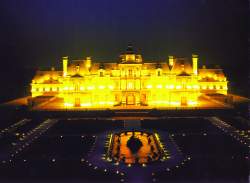
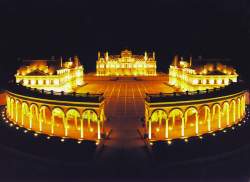
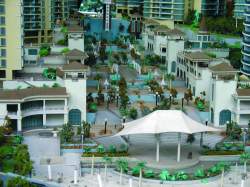


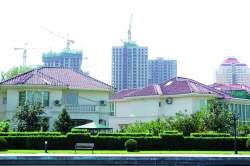
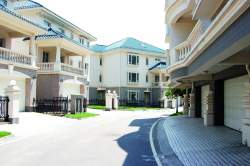


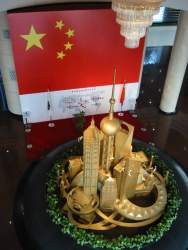
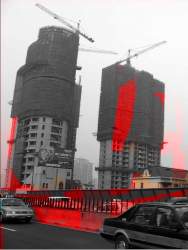

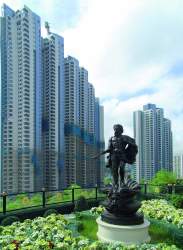
~Architecture seems to be squirted against the facades like sauce from a squeeze pack.~
建筑立面上堆砌的各种装饰,就像调味包里喷出来的佐料一样
One group of the so-called New Towns presents a pinnacle in these copy and paste practices. Dangling from Shanghai’s outer ring road — forty five miles from the centre — a total of nine satellite cities have been designed in authentic Eurostyle*. Forming part of Shanghai’s suburban expansion plan, each of the projects will accommodate half to one and a half million inhabitants (equivalent to the size of Amsterdam). A number of European architects have been sought out to design one town each in the spirit of their country’s traditional style. Distinctly British, Italian, German and Dutch towns should be completed by the end of 2006.
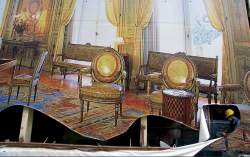
The British firm Atkins won the competition for Songjiang Garden City. The design is a collage of meticulously compiled moments in British township and village architecture, arranged amidst the rice paddies of Pudong. Gaoqiao New Town is the name of a green satellite city beside Shanghai’s Chemical Industrial Zone — China’s largest new industrial site. Designed by Dutch architects it is nothing short of a psychedelic reinterpretation of my country’s native architectural styles. The result is a perfect post-modern amalgamation of clog-shaped windows, stepped gables, and sculptures of giant tulips before a skyline of flaming exhaust pipes. Two questions arise: What makes the Eurostyle* so popular? and, What will this wicked post-urban environment look like in two generations? The second question is the harder to answer. I sincerely hope China’s greenification schemes will unfold as planned, so at least the smell and smog of neighbouring factories will have disappeared. I hope the economy will persevere, and the factory workers too will live in a clog-shaped home. But it is more likely the blunt mixture of contrasting conditions in the outskirts will only become more extreme; industry will relocate, and the former poorest neighbourhoods will be torn down to re-emerge further down the road. It is the threatened image of this outcome that begins to answer the first question, and suggest China’s plea for cosmetic surgery. The vast plains of China contain nothing, but are never empty. Decades of determined communism have left a tarnished landscape — a quilt of fields, brick homes, and rusty industrial ruins. But China’s new environment, the spreading suburb, is a first opportunity for some colour, substance and identity.

Last year Europe obtained ‘Approved Destination Status’ for Chinese citizens. This greatly simplifies visa procedures, and is likely to result in five hundred thousand Chinese tourists a year in Holland alone! Already three crammed busses of Chinese tourists stop each day to eat lunch in my old China Town bistro. They march through the Amsterdam alleys in the familiar mauve suites, holding video cameras and jam jars filled with tea. Travelling abroad has come within reach of a growing number of Chinese middle class, and Europe’s capitals seem to be the first spots they are drawn to. Cities like Amsterdam perfectly respond to long unfulfilled desires and undirected nostalgia. The centre, with its drunken merchant homes neatly aligned along cute canals, embodies what the new Chinese are looking for: history and opulence in full view. And in Amsterdam this opulence is private; the wealth here was obtained by self-made entrepreneurs. Dutch people in their beautiful homes represent a system of individuals all crammed together, like Chinese, and gently kept in line in the efficient maintenance of a strong tight order. These are the idealized values of new China. The charming old cities trimmed with gold reek of success. It is their cuteness, their mix of the petite and the grand, the time-honoured image of the city as it is no-longer to be found anywhere in China, that is imported on a massive scale.
China has effectively erased its past. Its existing cities are on paper essentially tabula rasa; in reality, they are only awaiting demolition. No wonder Europe’s features have become the desired ingredients for an instant history on offer to the first generation of Chinese home owners. They provide the details that create the necessary sense of identity; not representing Europe, but the identity of the young class of well-travelled Chinese citizens.
~Eurostyle* adds a sense of identity — not of Europe — but of a new class of well-traveled Chinese citizens.~
欧洲风格更是身份的象征——不是欧洲人的身份,而是周游列国的新一代中国人的身份。
From a European point of view, the design sketches suspended on the walls of newly erected town halls, and the translucent models of mega-suburban extensions, lack the appeal they seem to exert on most of the Chinese audience. It seems the Chinese citizen prefers a form of imitation modernity to the currently prevailing monotony. And, it must be said, Europe too has its share of desolate office districts and nondescript residential neighbourhoods, which seem to edge further and further away from the city without anyone being consciously aware of it.
Still, it is tempting for a Dutch architect to become cynical when confronted with a town in “Traditional Dutch Style” to be built as a satellite of Shanghai. The brand new models of bell-shaped facades and mini-merchant homes may appease today’s residents, but can they withstand the rapidly changing tastes? Much faster still than China’s urban landscape, it is the Chinese state of mind that is transforming. Today’s children, all products of the one-child policy, are educated, ambitious, and demanding. Most likely they won’t be satisfied with living in China’s future Euroghettos. Style may be irrelevant, until it is forced upon you. The new neighborhoods all built at once will lack the depth of time. The hope that a Corinthian column or spurted gable will help is doubtful. But in the end it is safer to have skyscrapers dressed-up in columns by Chinese architects than to have a European architect construct a utopian nightmare. And China, the world’s toughest adolescent looking for a new identity, mixing and matching as he grows, might already know this.
Owned by neville mars / Added by neville mars / 17.5 years ago / 74619 hits / 11 hours view time
Tags
Latest Entries
Contribute
Login to post an entry to this node.
